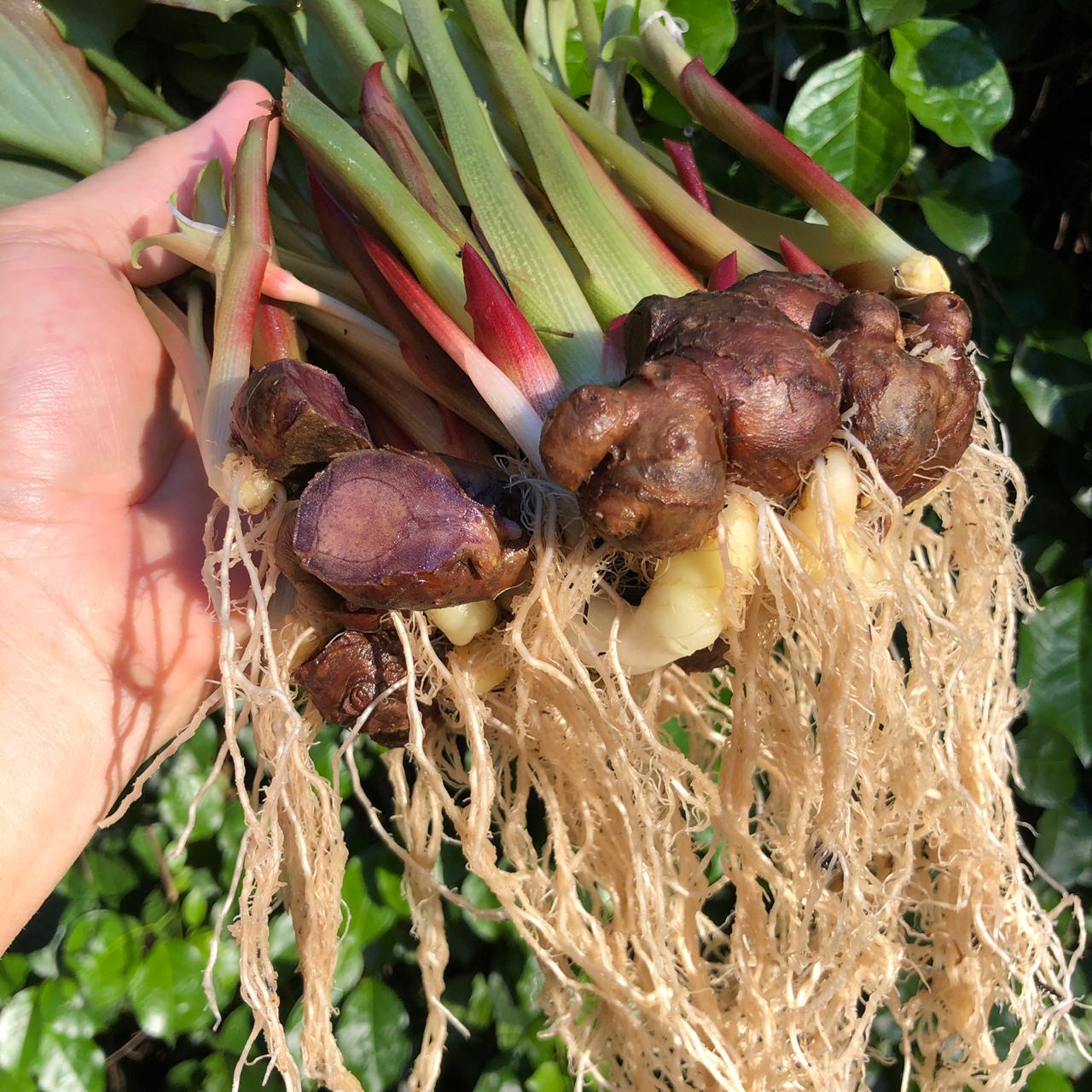
Black Ginger
Kaempferia parviflora
Basic Information
🌿 Family: Zingiberaceae🗺️ Zone: 9-11
Other Names:
- Thai Ginseng
- Krachai Dum
🌡️ Ideal Temperature : 70°F – 85°F
🔥 Heat Tolerance: Up to 95°F
❄️ Cold Tolerance: Down to 20°F
🌱 Type: Perennial
Layers
- Herbaceous
Functions
- Medicinal
- Edible
- Ground Cover
Pests
No pests associated with this plant.
Description
Black Ginger (*Kaempferia parviflora*) is a small, herbaceous perennial plant native to Thailand and Southeast Asia. It grows to about 20-30 cm (8-12 inches) tall, with dark green, glossy leaves that sometimes exhibit purple undersides. It produces small, pale lavender or purple flowers, often close to the ground. The most notable part of the plant is its underground rhizomes, which have a deep purplish-black coloration.
🌞💧 Sun and Water Requirements:
Black Ginger thrives in partial shade to full sun but prefers filtered light in hot climates. It requires well-draining, loamy, or sandy soil with consistent moisture, although it does not tolerate waterlogging.
✂️🫘 Methods to Propagate:
Propagation is primarily done through rhizome division. The best time to plant is in spring, ensuring rhizome pieces have at least one growth node. The rhizomes should be planted 2.5-5 cm (1-2 inches) deep and kept moist until shoots emerge.
🧑🌾👩🌾 When to Harvest:
Rhizomes are ready for harvest about 8-10 months after planting, typically when the foliage begins to yellow and die back. After harvesting, the rhizomes should be cured and stored in a dry, cool environment.
Purpose
- Medicinal: Traditionally used in Southeast Asian medicine for its potential anti-inflammatory, anti-fatigue, and aphrodisiac properties. It is often made into teas, extracts, or supplements.
- Edible: The rhizomes can be consumed raw, pickled, or used in herbal preparations.
- Ground Cover: With its spreading growth habit, it serves as a dense ground cover in tropical and subtropical gardens.